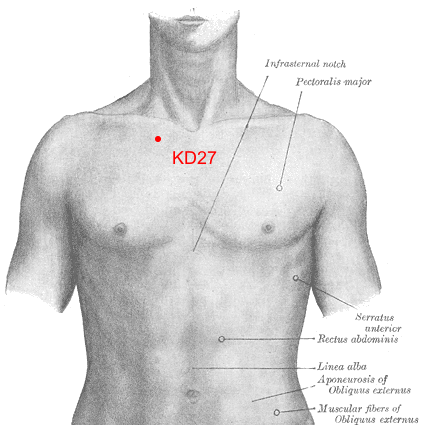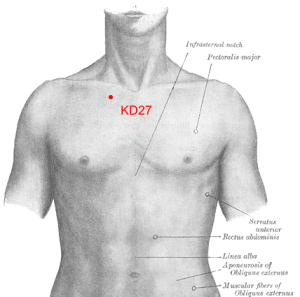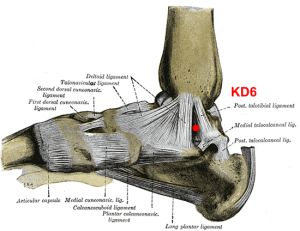We’re asked every now and then about acupuncture for kids. We love working with kids, but often times kids respond so well to acupressure alone, that dragging them into the office just isn’t necessary! This article is for a parent who asked about acupressure points for cough, and we figured she probably wouldn’t be the last one to ask, and probably isn’t the only person in the world who wouldn’t mind some at home cough suggestions. So, that said, here’s a quick run-through of some great points you can do to help with cough. Now, keep in mind we’re talking about acupressure here, which basically means a firm massage of the point using firm pressure that is borderline uncomfortable. Don’t go bruising yourself or others, but do be sure to use a pretty good amount of pressure.
A quick note on measurement: in the acupuncture world we look at the body measurements in proportional terms. For example, six inches down from the knee on a 6′ tall adult is only perhaps 1/4 of the way down, but six inches down from the knee on a toddler is well over half the distance to the ankle. So, all things are proportional to that individual’s body. Thankfully, our hands are pretty decent guides of the measurements we use in acupuncture, especially for the low-precision work we’re doing here with acupressure. So, in the following location descriptions, when I refer to “one inch” substitute “one thumb width” and you’ll be pretty close on that individual. For the average adult, inches will get you close enough, but for much bigger or smaller people, using thumb widths is helpful. Also, pretty pictures will accompany each point description, so between the two you should be doing pretty well!
1. Kidney 27
Kidney 27 is in a depression just below the collarbone, about two inches from the midline on an adult. I say on an adult, because in acupuncture and anatomy, all things are proportional to the individual’s own size. Specifically, this point if halfway between the nipple and the midline on each side. This one helps to open the chest, relieve breathing, and boost immunity.
2. Stomach 36
Stomach 36 is probably one of the most used points in acupuncture, it is great for a whole host of things, including boosting energy, aiding digestion, relieving diarrhea, stimulating immune function and even stress relief. Since the pine trees are starting to kick out pollen here in Fort Myers, acupuncturists in the area have likely been using this point a bunch to help keep immune systems in shape. It is on the shin, about one hand-breadth down from the hollow of the knee on the lateral (that’s toward the pinkie toe side) side of the tibia (shin bone) about a half inch from the bone.
3. Lung 7
Lung 7 is a good point for well, the lung. It is a great point for cold or cough of just about any cause. It is on the wrist on the radial side (thumb side), about an inch or so (technically 1.5 thumb widths by the TCM description) from that little hollow at the base of the thumb between the two tendons. Sorry, no extra-creepy Gray’s anatomy plate for this one. Apparently Dr. Gray thought people only needed to see the hand and forearm from the top and bottom. Either way, my hand with an “x” scrawled on it in pen should suffice. The cool thing about Lung 7 is that is pairs with our next point to really open up the chest and get things moving.
4. Kidney 6
Kidney 6 is a good point in its own right for sore throat, which generally accompanies coughing. Paired with Lung 7 it has a stronger effect, and though I’m currently having a hard time finding this pairing indicated in any texts for cough and cold, we use it on just about every patient that has any respiratory complaints and in our experience it works wonders! KD6 is on the ankle on the medial side (towards the big toe), about an inch below the point of the medial malleolus (ankle bone) in the depression between the two tendons.
5. Ding Chuan
Sorry, no pretty picture for this one because the description is pretty easy, and all the pictures on the internet were pretty lame for this one. Ding chuan is a great point for asthma, wheezing, colds, just about any respiratory problem. How to find it? Ok, you know those bumps you have all down your neck and back along the spine? They’re called spinous processes, in case you were wondering. Anyways, find the biggest one on your neck, it should be kind of at or just below where your shoulders and neck meet. Got it? OK, feel the space between it and the next process. Ding chuan is on either side of the spine from where your finger is now, about a half inch from the midline.
Ok, that’s it! Enjoy!




